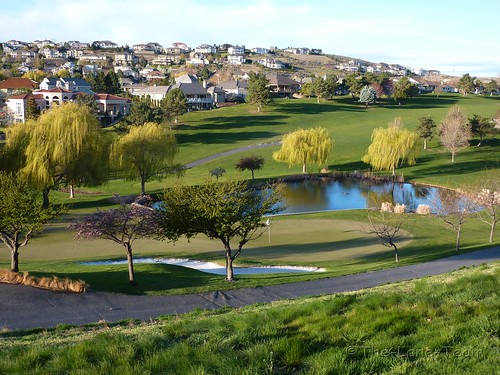I was recently chatting with a client about an urban cable car project we’re working on (which non-disclosure agreements prohibit me from speaking on further). He’s a very successful entrepreneur and real estate developer with his hands in more than a few industries.
He’s also owned a couple of ski resorts and had an insight I’d never heard before.
His basic thesis around ski resorts was this: Ski hills are like golf courses. You’re never going to make money off of the hills themselves. You make your money off of the real estate around them.
That sounds very much like the Freemium Public Transit model we’ve discussed in the past. It also speaks to the reasons why lifts are typically designed to the lowest needed capabilities possible. If this gentleman’s theory is correct, then a lift is nothing more than a loss-leader in the overall ski resort market. Those lifts must therefore be as cheap as possible to maximize profits.
Which in turn helps explain why the industry has yet to truly exploit the capabilities of the technology. As this industry matures and systems move away from being pure loss-leaders, technological advances are almost guaranteed.


4 Comments
This is not everywhere true – if the ski area has a sufficient flux of users, the lifts themselves become the most profitable activity – this is for example the reality of Dolomiti Superski consortium : they make more money form lifts respect surrounding activities , Hotels, Restorants etc. , thats because they have enough customers , day-riders or sojourning , to make them a profit.
In an Urban area I’d rather think that if its correctly designed and implemented , a CPT could make profit by itself.
Interesting angle, but I’d never thought of ski resorts as a “freemium” model with the high and ever increasing ski lift tickets. Individual day tickets can be $55-70 discounted these days at Costco,etc.. but they do offer early bird season lift tickets too (often with varying levels of restrictions).
Rather I’ve always thought of ski resorts as the playgrounds of the upwardly middle class that wants to be active and outdoors in the winter… and for the owners one hell of a risky outdoors, weather & public fickle enterprise that is not for the faint of heart. A strong ego, very deep pockets and a lot of luck help too.
It is a very labor, energy and natural resource demanding enterprise that is at the whims of nature, economic and social conditions.
And they definitely do make some money off the lift tickets and even more off of the additional service and product offerings for lunch, etc.
I’d imagine they have loss leaders in the “learn to ski/snowboard” packages as they realize they need to get “new blood” on the hills.
So do they need the cheapest lifts? Yes. But they also need high volume lifts and the detachable chair lifts are the best thing ever for new skiers and boarders because the previous ones were hell for beginners and they probably lost a lot of newbies that would never come back due to the stress of getting on and off the darned ski lifts!
It doesn’t help that most of their money coming into the ski resort:
is made in a short amount of months
is only huge (and profitable) only on certain key weekends
too slowly during the week (thus probably losing money M-Th/M-F)
trickles in during the off season
But expenses can come all year round of course.
Let’s not forget that there are still many regulations they have to abide by and environmentalists do not like ski resorts and that some of the most rabid environmentalists hate ski resorts and want them shut down.
So freemium model? Not really. More like the “Commuter” model meets some “freemium” concepts run by individuals or companies that are really daring to even try it!
Note #1: I love to ski and snowboard (unlike someone else I know, lol), but learning to do so at 25 was nuts. It’s so much easier to get young kids to learn
Note #2: How do we get people of all ages to learn about urban gondolas?
As you say repeatedly – this is why we need excellent urban gondolas installed at the right places for the right reasons and integrated into the transit and city fabrics so people can see the “magic” of clean, quite, reliable, comfortable, timely and fun transit service that in some cases only gondolas can provide.
Hey, I love to ski now as well – but I hated it at first ;-). Learning to ski in your 30’s is definitely a terrible idea.
Elevators are also loss leaders. But nobody would want to live in the 29th storey without an elevator. Before elevators where common the flats in the let for where the expensive units. Nobody wanted to climb the stairs. Today the highest flats are the most expensive.
Despite being loss leaders the elevator industry made done progress and had its innovations.
Modern cities could not exist without elevators and escalators. IMHO cable propelled transit should position itself as a variant of the elevator.